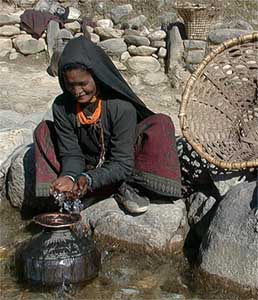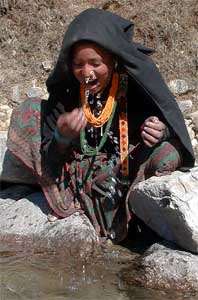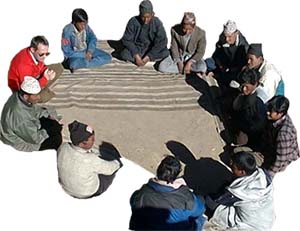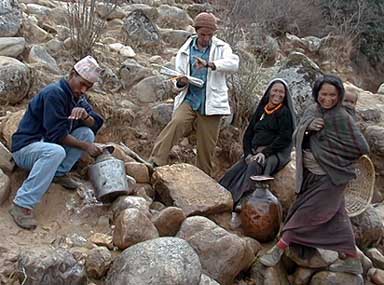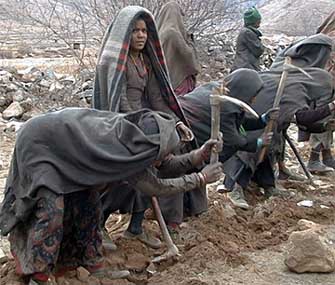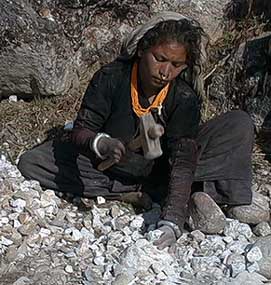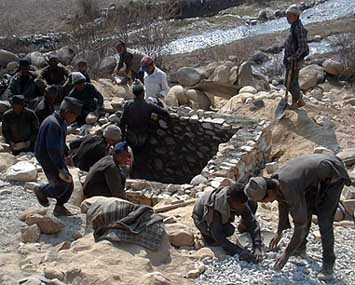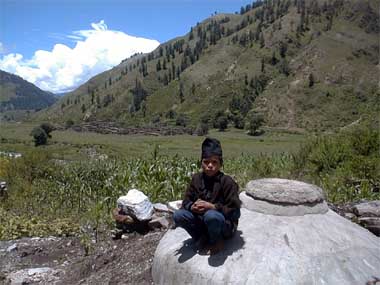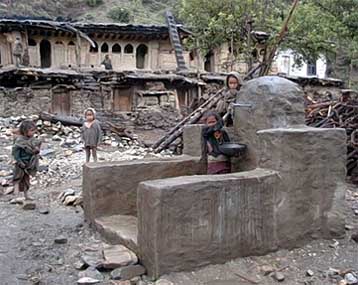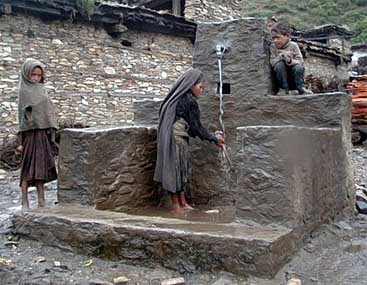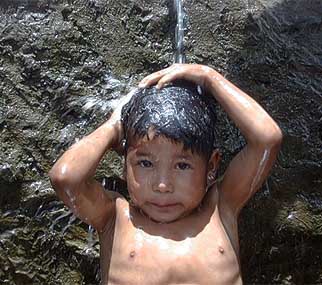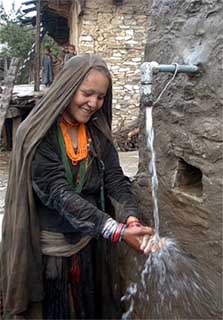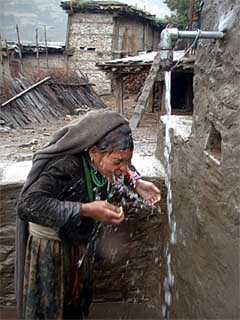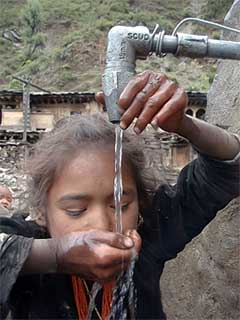| Clean drinking water |
 |
 |
 |
|
To have access to clear and pure
In the monthly VDSC (village development support committees) in each village, issues with regard to the improvement and development of the village situation are discussed with the local people, and only after they have clearly understood and requested RIDS-Nepal to participate in the building of a village drinking water system, a project can be initiated.
In every village drinking water system project the local people and RIDS-Nepal share to equal parts the overall costs. Often RIDS-Nepal comes up for the planning; materials, like pipes and cement; it's transport by air; etc. The local community participates equally in their 50% through carrying the materials from the airport to their village (usually about a day's walk),
The peoples' participation through work and sweat ensures ownership of the project by the community and makes it more likely that the system will be maintained in good repair. To further strengthen this likelihood, two people per village are selected for maintenance training that goes alongside the building, and the village community has to agree that they will raise a small monthly amount from each household, so that ongoing maintenance costs will be covered. This means that the community will be able to maintain their village drinking water system responsibly on a long term basis. How wonderful fresh and pure water. Click here to view the Kholsi Drinking Water Photo Story. Click on the thumbnails below for more information
|
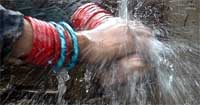 drinking water
drinking water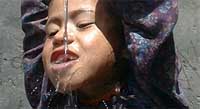 is a basic necessity. Springs provide pure water, but water is not usually taken directly from the spring, nor is the spring protected from pollution by humans and animals. People often take their daily drinking water from open sources like rivers and irrigation canals, but unfortunately people also use the rivers for other less hygienic practices. The dead, whether people or animals, are cremated beside rivers, and beside running water is a favorite place to defecate, because there is plenty of water nearby to clean oneself with. This means that most local people use unclean, and often thoroughly bacteria infested water as their daily drinking water.
is a basic necessity. Springs provide pure water, but water is not usually taken directly from the spring, nor is the spring protected from pollution by humans and animals. People often take their daily drinking water from open sources like rivers and irrigation canals, but unfortunately people also use the rivers for other less hygienic practices. The dead, whether people or animals, are cremated beside rivers, and beside running water is a favorite place to defecate, because there is plenty of water nearby to clean oneself with. This means that most local people use unclean, and often thoroughly bacteria infested water as their daily drinking water.